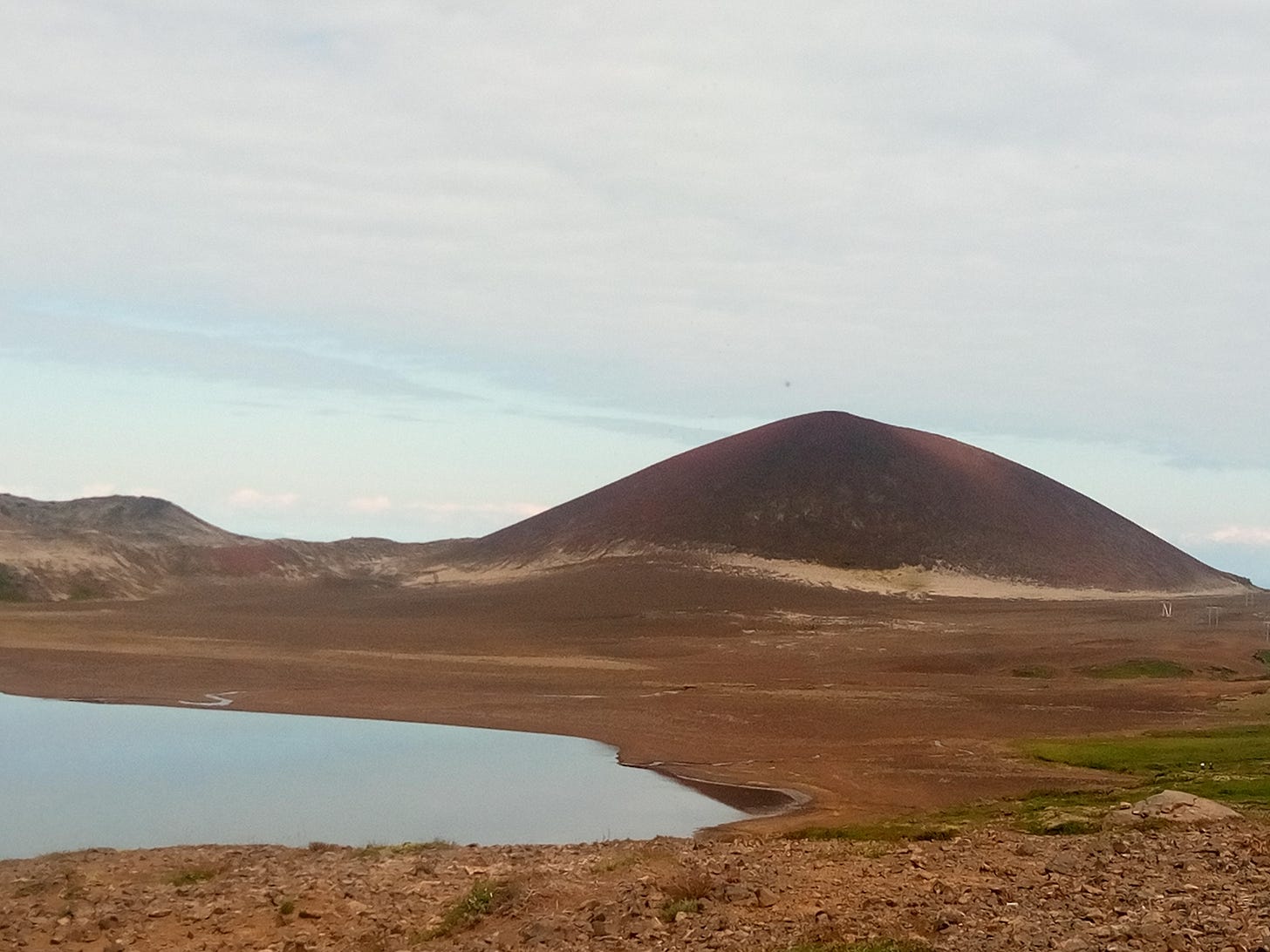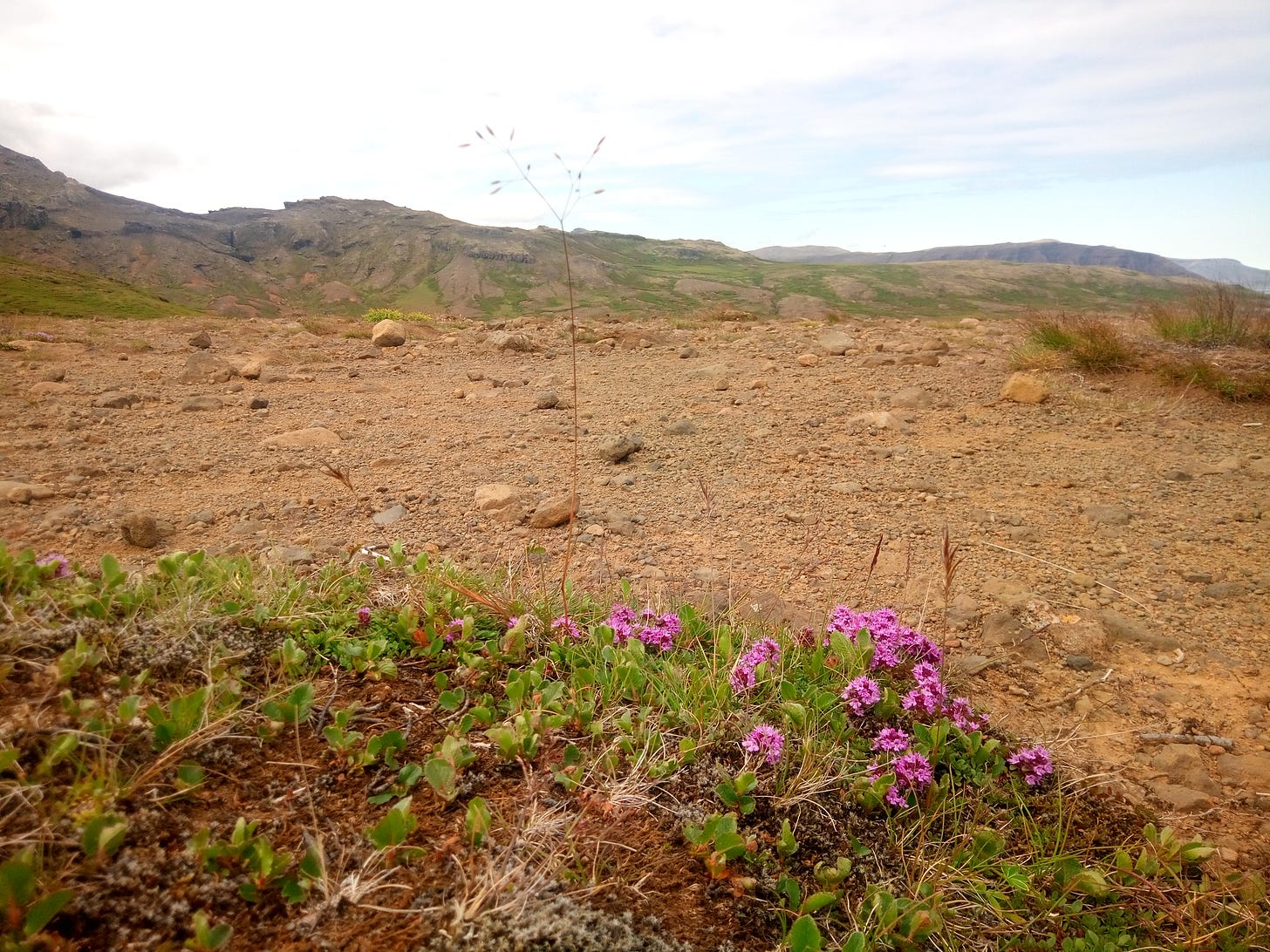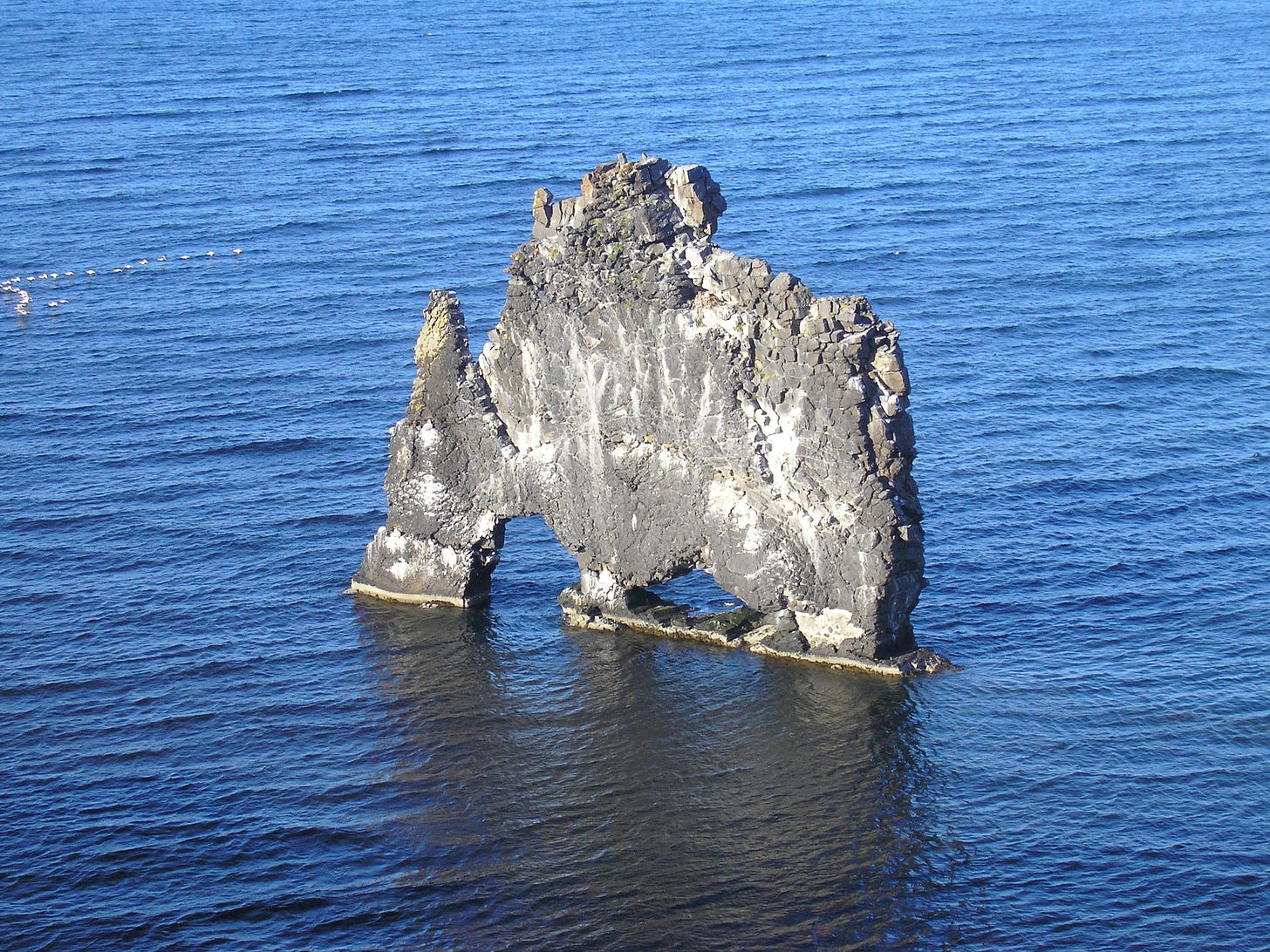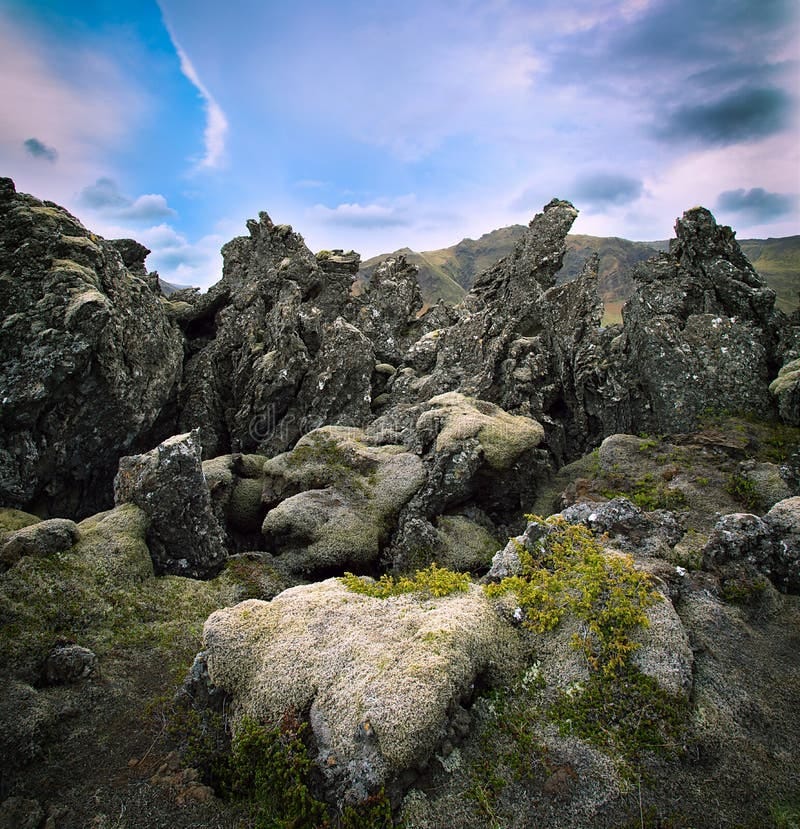If you ever find yourself wandering the windswept Snæfellsnes Peninsula in Iceland, prepare to stumble upon something truly otherworldly: Berserkjahraun, the “lava field of the berserks.” This eerie expanse of jagged, black rock sprawls across the western slopes of Mount Helgafell, stretching between Stykkishólmur and Grundarfjördur.
It’s ancient, about 4000 years old, formed in a fiery burst of volcanic rage when four scoria craters erupted in quick succession. The lava surged down the sides of Bjarnarhafnarfjall, eventually reaching the sea at Hraunsfjördur and Hraunsvík, freezing time in a landscape of solidified chaos.
Now, with a name like Berserkjahraun, you’d expect a tale soaked in blood and myth, and you'd be absolutely right. The field bears the name of the berserks, those legendary, wild-eyed warriors of Norse lore said to fight in a trance-like frenzy under the favour of Odin himself. And the way this particular lava field earned its fearsome title is just as intense as you’d hope.
Enter the Eyrbyggja saga, one of the more peculiar and thrilling of the Icelandic sagas. While it mainly recounts the long and bitter feud between chieftains Snorri godi and Arnkel godi, what makes this saga stand out is its heavy dose of the supernatural. We’re talking dangerous revenants, pagan rituals, and undead men like Thorolf Lame-Foot, who is buried, reburied, burned, and then reincarnated as a bull. Good stuff for a zombie movie.
But the saga's most brutal moment comes in Chapter 28. Two berserks are in service to a man named Styr. Things go south when one of the berserks develops an interest in Styr’s daughter, an interest that makes Styr very uneasy. He turns to Snorri for advice, and together they hatch a deadly plan. Styr commands the two berserks to clear a path through the dense, brutal lava field, an epic task that borders on the impossible. The terrain is harsh, jagged, and unforgiving. It’s a job of Herculean proportions. But the berserks manage to finish it, exhausted and worn out.
As a reward for their hard labour, Styr invites them to relax in his bath-house. But it’s a trap. Once inside, the berserks are locked in, ambushed, and killed. Their bodies are thrown into a lava pit near the newly made path. And with that, their story ends - violently, as berserk stories often do.
What’s fascinating is that the saga’s author believed this path, the one the berserks allegedly carved, was still visible at the time of writing. It serves as an early example of how Icelandic sagas often weave fictional tales around real landscape features to create compelling origin stories. And to this day, the path through Berserkjahraun is still there. Hikers in Snæfellsnes often follow it, retracing the doomed journey of the berserks.
Berserkjahraun itself is one of the roughest lava fields in all of Iceland. It's covered with barely any vegetation, and it’s experienced very little wind erosion. In medieval times, it must have been virtually impassable. So the very idea of clearing a path through seems wildly unrealistic, yet today several small tracks and trails cut across the field, made for both horses and hikers. Their exact age is uncertain, but at least one of them is almost certainly older than Eyrbyggja saga itself.
There are four landmarks mentioned in the saga that still exist in Berserkjahraun today:
Berserkjagata, the actual path the berserks supposedly cleared under duress.
Berserkjadys, the place where they were said to be buried - a pit so deep, the saga tells us, that the only thing visible from its bottom was the blue sky above.
Landamerkjagardur, a boundary fence marking territorial divisions.
Fjárrétt, a sheepfold tucked into the harsh terrain.
But not everyone accepts this dramatic saga tale as the real explanation for the name Berserkjahraun. In the 1960s, Icelandic scholar Thórhallur Vilmundarson proposed a very different theory. He suggested that the place name might have absolutely nothing to do with warriors at all.
Let’s dig into the word itself: Berserkjahraun. It’s a compound: hraun means “lava,” and berserkja is the genitive plural of berserkur, obvious meaning. But Vilmundarson questioned whether berserkja in this context actually referred to people. He pointed to other Icelandic place names containing the word serkur, such as Hvítserkur, a striking 15-meter-high basalt sea stack in northwest Iceland, and Bláserkur, a mountain mentioned in the Saga of Erik the Red located in Greenland.
These names intrigued 19th-century scholars, some of whom were sceptical of Eyrbyggja saga as a reliable historical source. They started picking apart the etymology of berserkur, theorising that it might actually be a compound of ber (meaning “naked”) and serkur (meaning “shirt” or “tunic”). In that interpretation, ber-serkur would translate as “bare-shirt” or “shirtless”, possibly not a warrior at all, but someone exposed, vulnerable, defenceless.
Armed with that hypothesis, scholars turned their attention back to the lava field. In Berserkjahraun, they identified four spatter cones - small, steep-sided volcanic craters formed by splattering lava fragments that welded together. These cones are barren, bleak, and completely devoid of vegetation. In essence, they look stripped, as if nature itself had peeled off their “shirts.” Naked hills. Ber-serkir.
If this geological interpretation is correct, it would mean that the saga tale of the berserks was not a historical memory but a creative back-formation, a story invented to explain an existing, but misunderstood, place name. In this version, it wasn’t the warriors who gave their name to the land, but the land that inspired the tale of the warriors.
Whatever the truth, Berserkjahraun remains one of the most mesmerising and mysterious lava fields in Iceland - a stark, jagged landscape born of fire and myth. Whether you believe in the saga’s chilling tale or favour the geological explanation, walking through this field is like stepping into the pages of legend. The name alone invites you to imagine blood, sweat, betrayal, and the echo of berserk footsteps crunching through volcanic rock.









I hadn't heard of this! Thanks for sharing. Someone needs to write a melodic doom metal concept album about the saga. Just saying...
Thank you! So well-written, and just before I visit Snæfellsnes Peninsula! I hope our tour will take us by this spot.